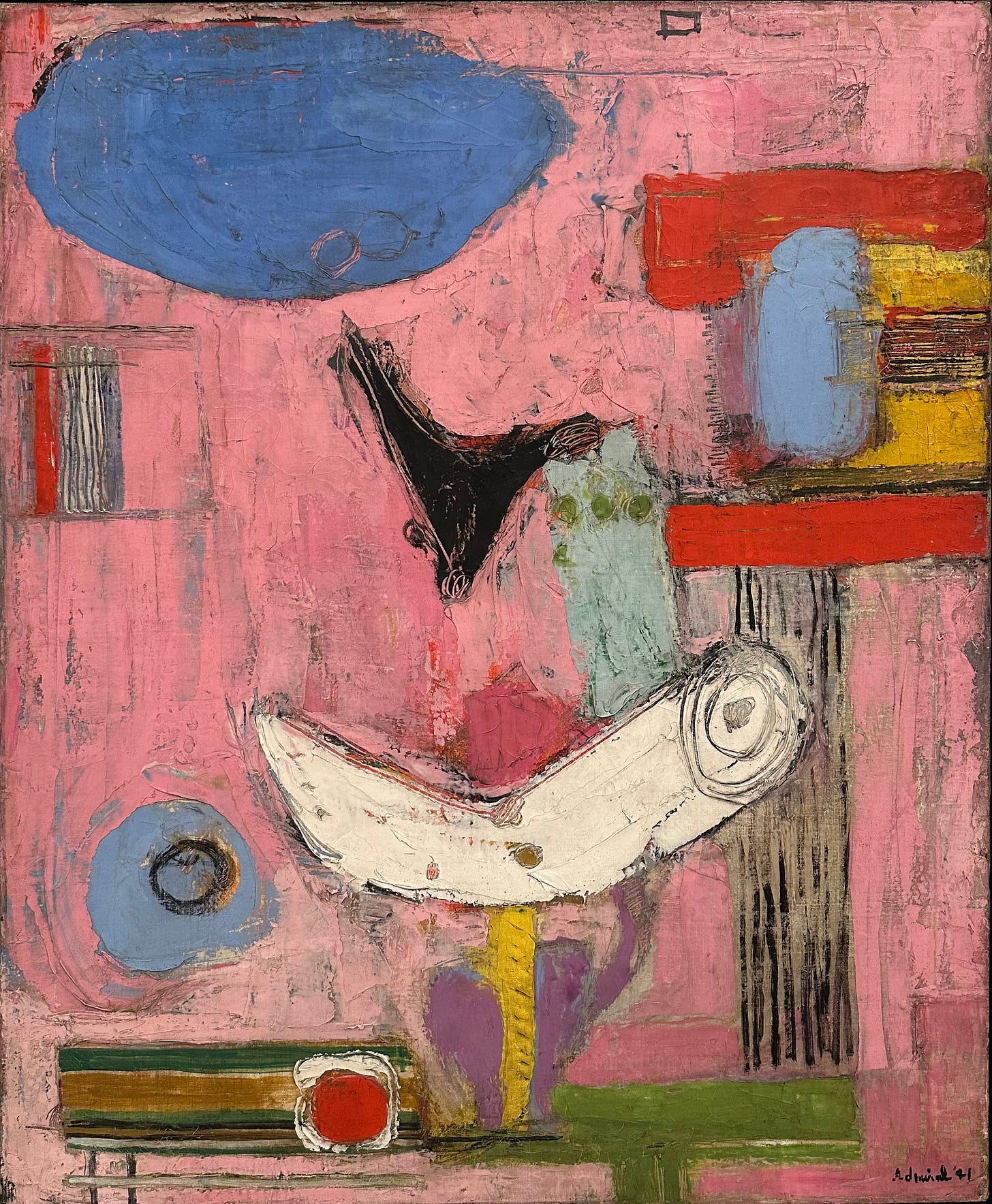In a favorite corner of the barn I call home, sits a small porcelain cup purchased from an artisan at the Biscuit Mill in Cape Town, South Africa. Upon it, the figure of a kitten says to a silhouette of a bunny: why do you keep your tail so short?
I can’t speak for rabbit scut (see synonym for rabbit tail), but I too am bedeviled by the question of optimal “tale” length. Now is when I’d customarily begin my tale with a digression into Cavafy with references to oars and winnowing fans, possibly stumbling into Tristram Shandy territory. But that would just selfishly showcase me pulling scarves from the silk hat of my own imagination. The point I want to make here is about the joys of digging into the unexplored imaginations of other people. Note to self: more learning, less waiting to edify.
Picture this: a mother and daughter (me and mine) walk into a museum. Both pause at great length before the same fantastic painting. It’s one we’ve never seen before, from an artist whose name neither recognizes. The wall plaque states that the artist, Virginia Admiral, studied with Hans Hoffman. She was also a poet active in the San Francisco poetry scene in the 1930s, and published a single-issue magazine with poet Robert Duncan. The painting itself was a gift of Peggy Guggenheim in 1966.
Intrigued, I took a photo of both the artwork and the plaque. Back home, I dive in to discover a post on First of the Month, which captures Admiral’s remembrance of Robert Duncan, whom she first met at UC Berkeley. In it, she captures wonderful details about him and the scene they shared. Her distinctions between the campus youth groups are full of fascinating insights. She portrays the old Left of the Thirties (Stalinists instructed to eschew all political deviation including homosexuality…women were to wear high heels and silk stockings) and her cadre of New Left (Trotskyites more closely aligned with the Beats and Hippies, and viewed even by “elder Trots” as “too dirty, arty and gay”.
Next, I found an online article from the Greenwich Village Preservation Society that details her later life, studying with Hans Hoffman and living at 30 East 14th Street with her then-husband figurative painter Robert De Niro, Sr. The article advocates for landmarking the neighborhood and the building as a center of social innovation, “a hub of the publishing industry and a site of radical and progressive political activity” which “housed some of the great artists of the 19th and 20th centuries”. Admiral and De Niro Sr. played host to Henry Miller, Tennessee Williams, and Anaïs Nin, for whom they both briefly wrote erotica. It’s full of great photos. Check it out.
I’ve often lamented the relative dearth of online images for De Niro Sr.’s artwork. I now feel the same way about the actor’s mother Virginia Admiral. De Niro Jr. produced a documentary on his father a few years back. It’s languished too long on my list of must-see films. I wonder how much of Admiral's art makes it into the story. Though they divorced, De Niro Sr. and Admiral remained close friends. She is the one who explained the father’s very private homosexuality or perhaps bisexuality to the son, and she nursed her former spouse in his final years.
In 2019, a long-overdue monograph on De Niro Sr.'s art, writing, and poetry was published by Rizzoli. Nothing yet on Admiral, though her artwork is in the permanent collections of MOMA, the Met, SFMOMA, and the Guggenheim Collection in Venice. Her work as an activist in the anti-war movement and advocate for the rights of artists and the impoverished has largely gone unreported. According to a brief obituary in the New York Times: “In the 1960s, she was instrumental in obtaining low-cost housing for artists working in the SoHo area of New York.”
The world is full of famous people (some more fascinating than others), but human history contains many under-discovered gems. Many of these are women.
This seems as good a time as any to point towards a favorite substack of mine. Iris Dunkle is a force of nature. She’s an award-winning literary biographer, poet, and essayist. Her Finding Lost Voices substack brings back the voices of those who have been forgotten or misremembered. Her focus is on women’s voices and her profiles are both insightful and necessary. It’s become a favorite rabbit hole. Take the plunge.
Virginia Admiral, Astrazione No. I, 1941







Thank you so much for the shout-out for Finding Lost Voices: https://irisjamahldunkle.substack.com/
And thank you, too, for sending me down a rabbit hole to try and learn more about this artist!
I enjoyed reading your newsletter, Tamsin. Now I have to add more names and things to look up to my already impossibly long list of things to do. An enjoyable and educative read. Thanks.